Rays in Geometry - Definition, Examples, Quiz, FAQ, Trivia
Learn about rays with simple explanations, visual diagrams, and interactive activities
What is a Ray in Geometry?
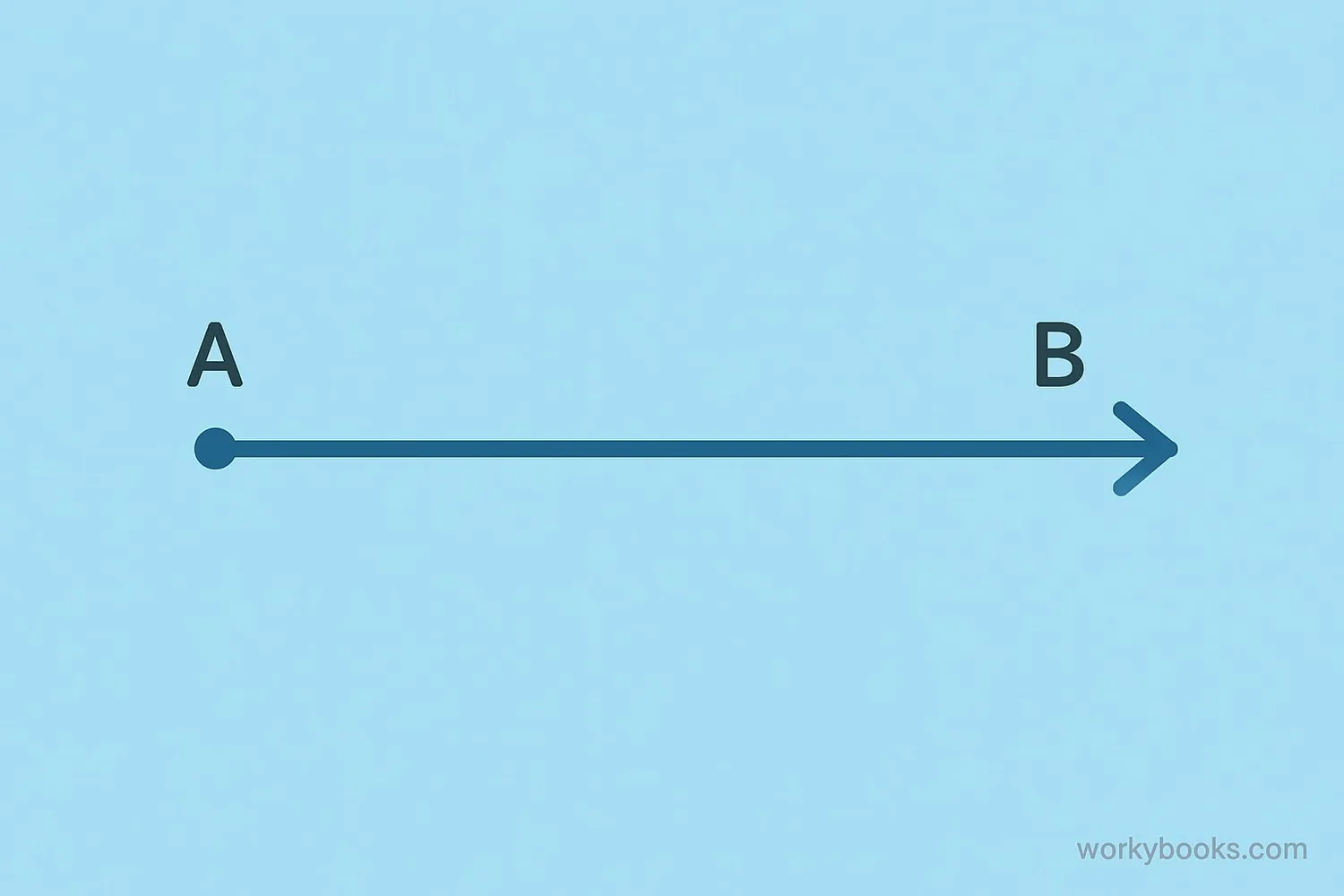
A ray is part of a line that has one endpoint and extends infinitely in one direction. Think of it like a laser beam that starts at one point and goes on forever in one direction.
Key characteristics of a ray:
- Has exactly one endpoint (starting point)
- Extends infinitely in one direction
- Has no defined length because it goes on forever
- Is straight and has no curves
Key Concept
A ray is different from a line segment because it has only one endpoint and continues forever in one direction.
How to Name Rays
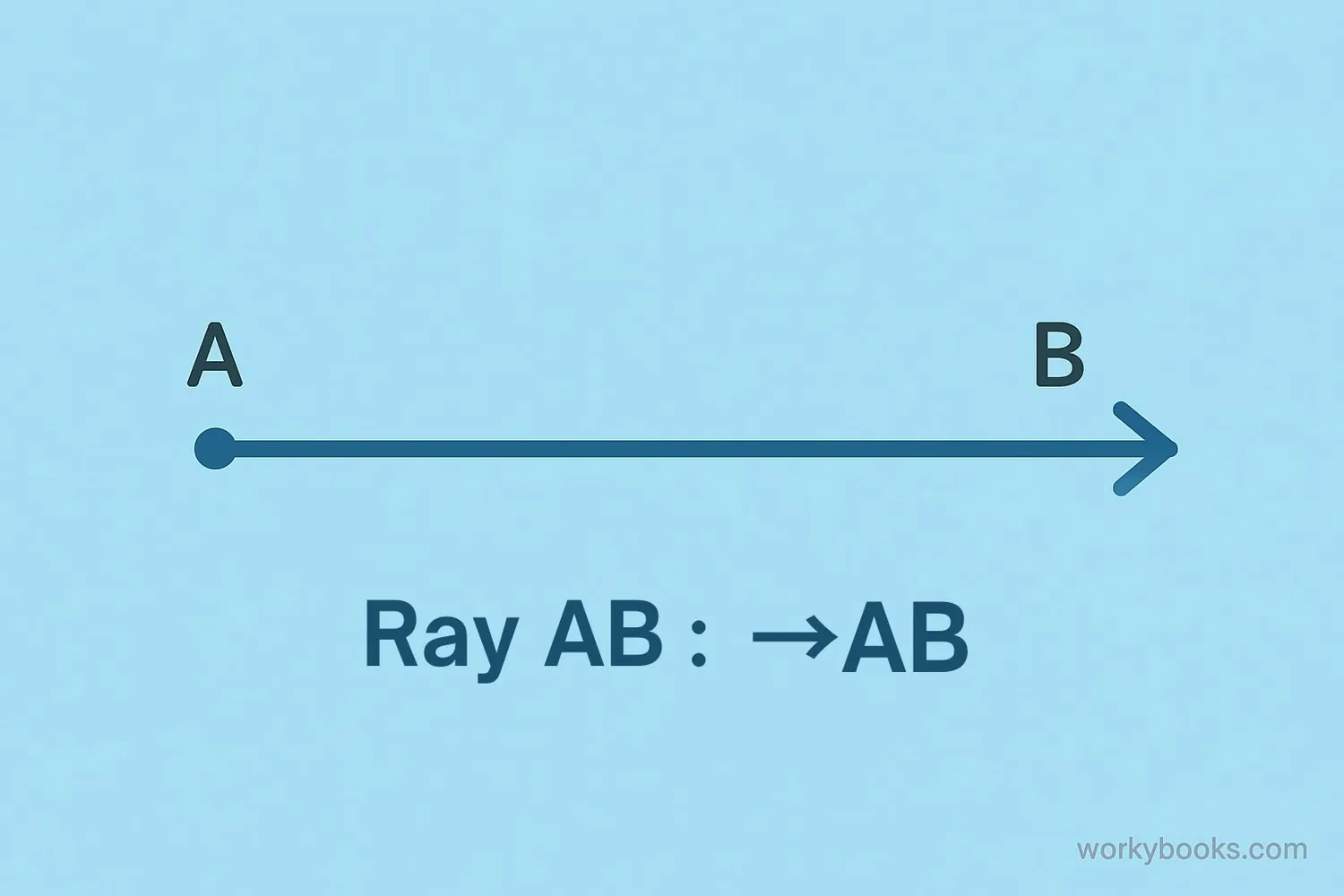
Rays are named using two points:
1. The endpoint (always comes first)
2. Another point that the ray passes through
The ray is written with an arrow above the two points: →AB
For example:
- Ray AB starts at point A and goes through point B
- Ray BA starts at point B and goes through point A (a different ray!)
Remember
The order of points matters! Ray AB and Ray BA are different rays pointing in opposite directions.
Parts of a Ray
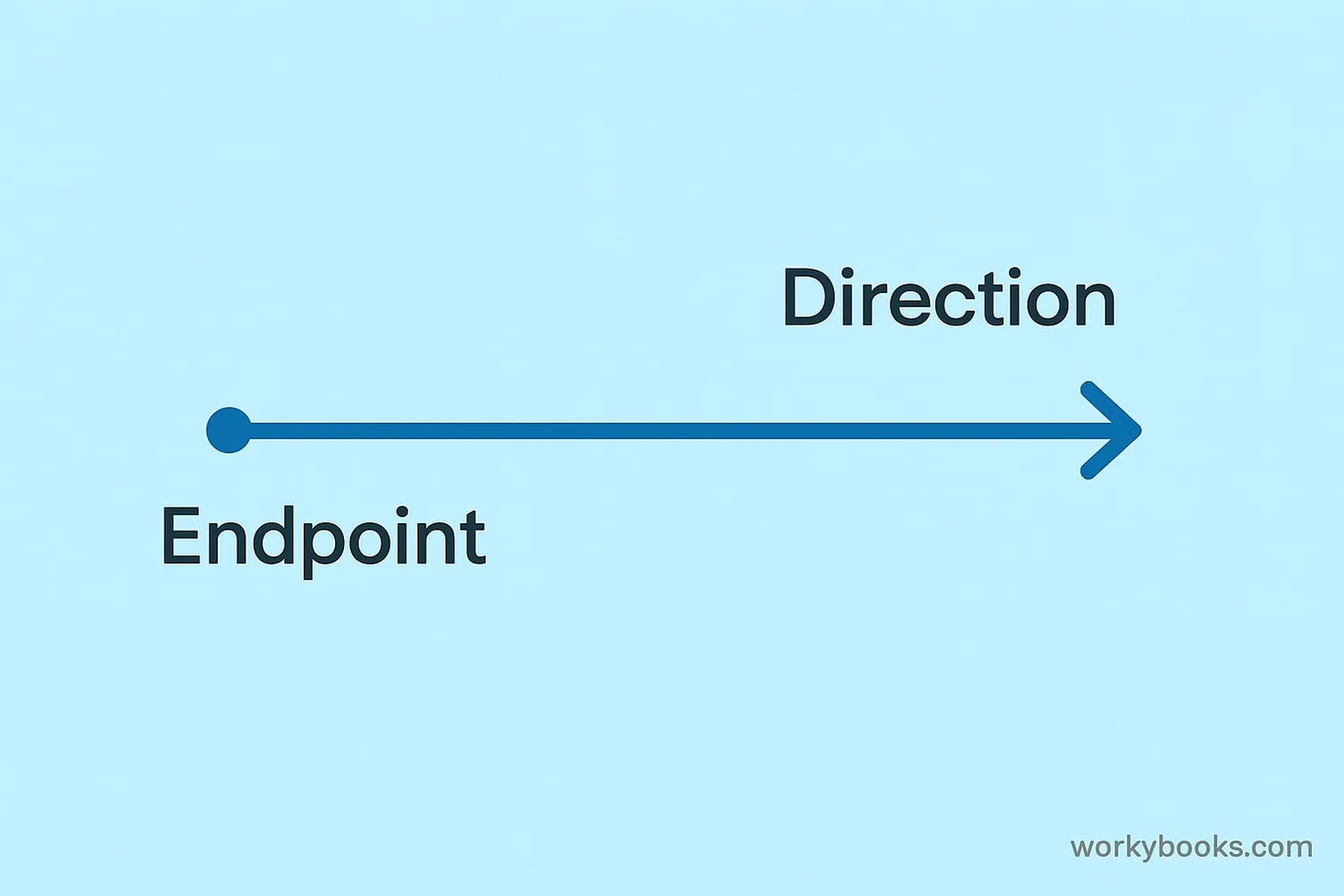
Every ray has two important parts:
1. Endpoint: The starting point of the ray. This is a fixed location where the ray begins.
2. Direction: The path along which the ray extends infinitely. The direction is shown with an arrow at one end.
Unlike a line segment, a ray has no second endpoint because it continues forever in one direction.
Key Concept
You can think of a ray as having a "beginning" but no "end" - it goes on forever in one direction.
Ray vs. Line Segment
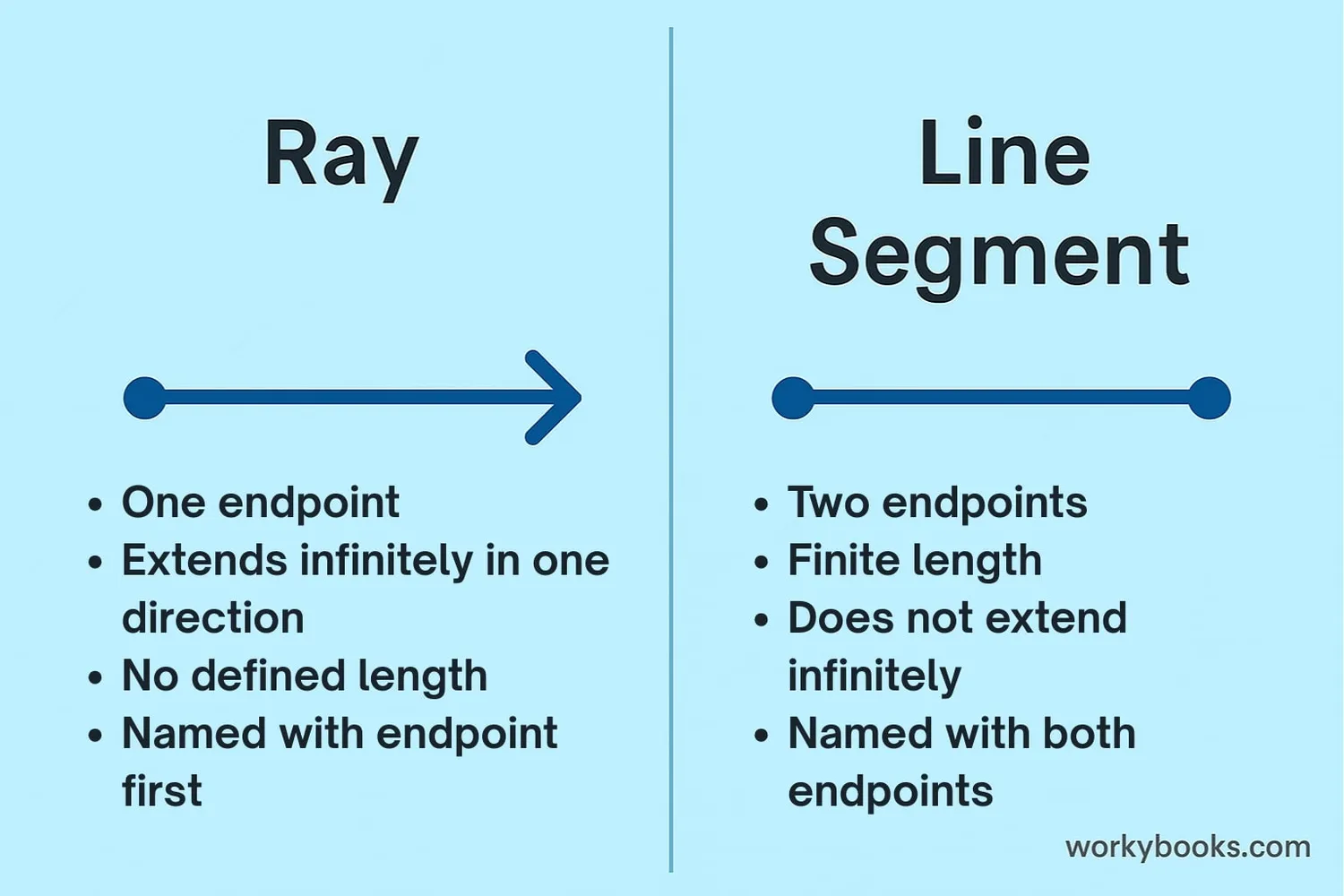
Understanding the difference between rays and line segments is important:
| Feature | Ray | Line Segment |
|---|---|---|
| Endpoints | One | Two |
| Length | Infinite | Finite |
| Extends | Infinitely in one direction | Does not extend |
| Naming | Endpoint + another point | Both endpoints |
| Example | Laser beam | Pencil |
Real-World Examples of Rays
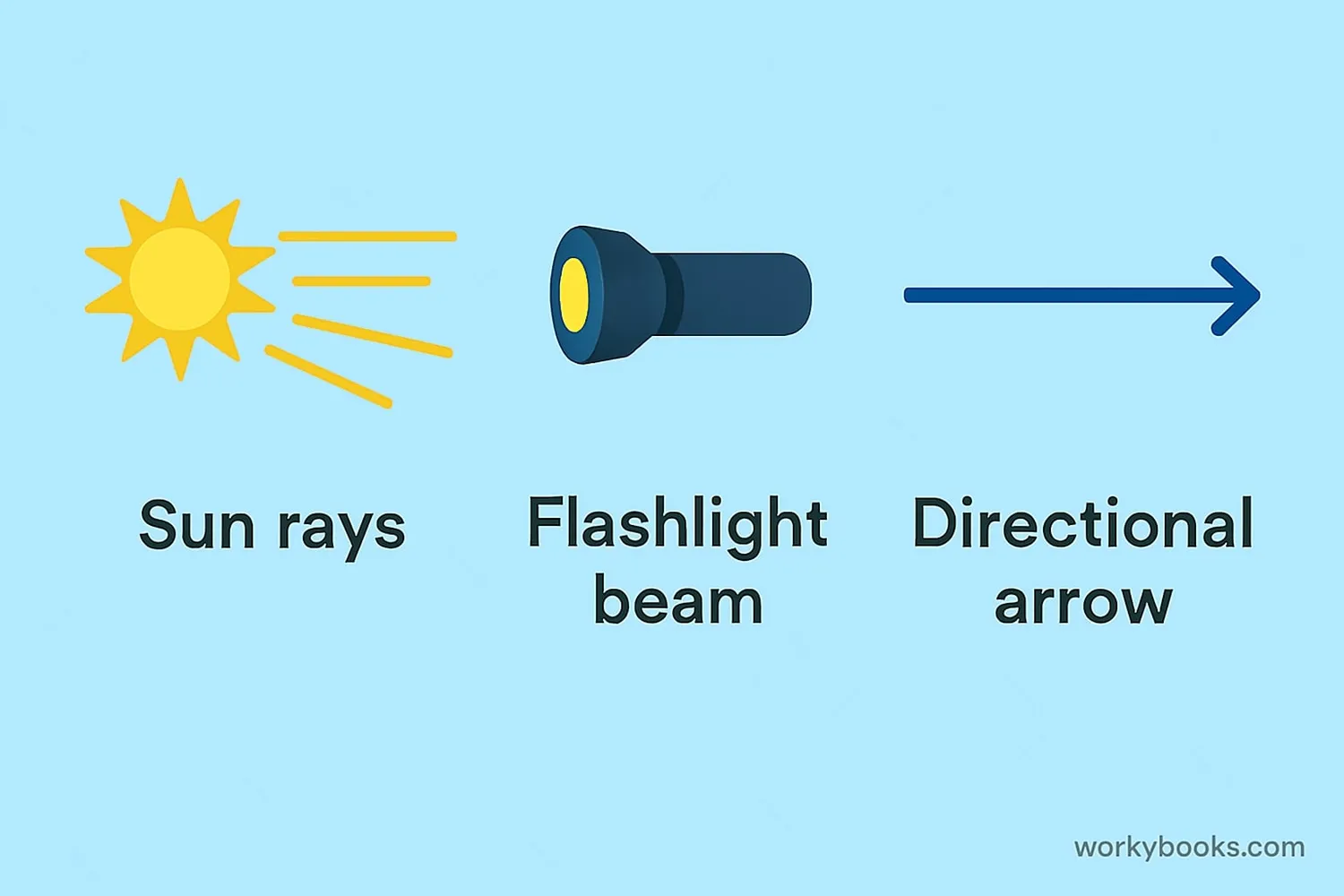
Rays are all around us in the real world:
1. Sunrays: Sunlight travels in rays from the sun to Earth. The sun is like the endpoint, and the light travels infinitely (until it hits something).
2. Flashlight beam: When you turn on a flashlight, the light forms a ray starting at the flashlight (endpoint) and extending outward.
3. Laser pointer: The beam from a laser pointer is a ray that starts at the pointer and continues until it hits a surface.
4. Directional arrows: Arrows that point in one direction represent rays - they have a starting point and show a direction.
Remember
Rays represent things that have a starting point but continue indefinitely in one direction.
Ray Geometry Quiz
Test your knowledge with this 5-question quiz. Choose the correct answer for each question.
Frequently Asked Questions
Here are answers to common questions about rays in geometry:
Geometry Trivia
Discover interesting facts about geometry and rays:
Ancient Geometry
The concept of rays dates back to ancient Greek mathematicians like Euclid, who described them in his book "Elements" around 300 BCE.
Light Rays
In physics, light travels in straight lines called rays. This is why we can use ray diagrams to show how light reflects and refracts.
Infinite Possibilities
Since rays extend infinitely, they contain an infinite number of points. This concept helps mathematicians understand infinity.
Space Rays
Cosmic rays are high-energy particles from space that travel in straight paths like geometric rays until they interact with matter.





